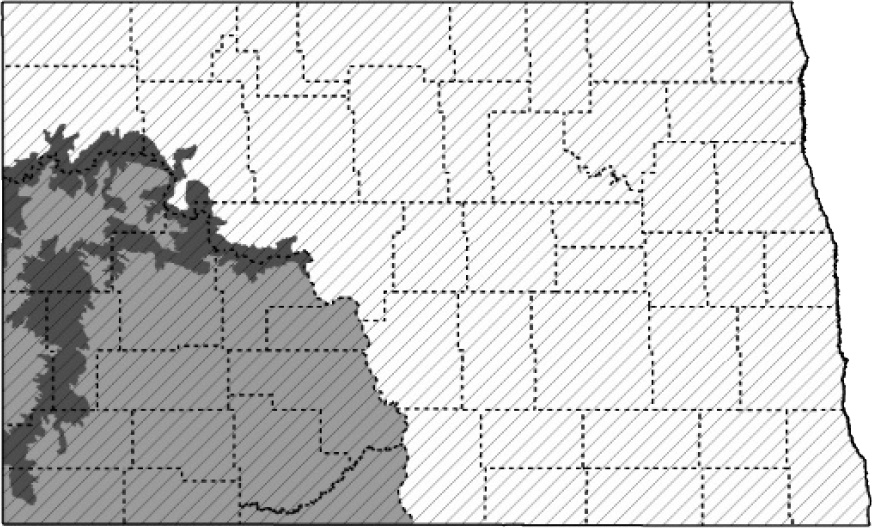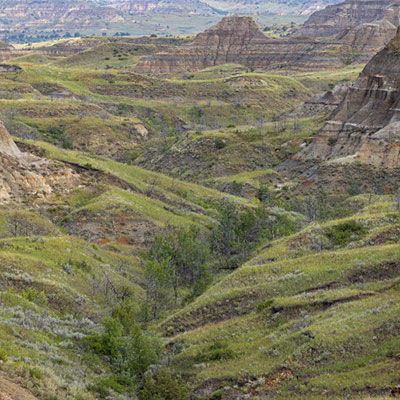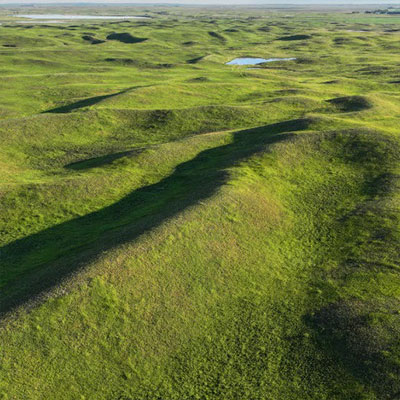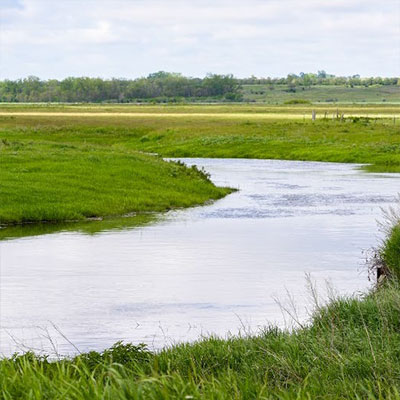Golden Eagle

NDGF
L 30”, WS 79”, 10 lb. Dark brown overall, feathered legs, brown eyes, and black beak. The head turns golden as an adult.
Status in North Dakota
Year-round and migratory. Peak breeding season early April to July.
Reason for SWAP Designation
Regionally or globally imperiled (SGCN a.).
ND ranks 15th out of 16 states for highest percent of the global population during the breeding season (eBird).
Although Golden Eagles are stable to slightly declining, they are susceptible to increasing incidental take and disturbance due to changes on the landscape at both state and national levels.
Threats
Loss of grasslands and shrubland, habitat modification.
Eagles may be limited by the abundance of their primary prey, rabbits and ground squirrels.
Pesticides reduce prey availability and improper pesticide use may be directly harmful.
Human activity such as recreational viewing, research activities, noise, agricultural or energy development activities, or the mere presence of humans may agitate nesting eagles if the disturbance is close (<330 ft.) and/or persistent.
Disturbance of nest sites may lower reproductive success, cause nest abandonment, or reduce territory reoccupancy in subsequent years.
Classified as climate-endangered, Golden Eagle is projected to lose more than half of its current distribution by 2050, with no net gains of new areas (Audubon).
Collisions with vehicles, overhead lines, wind turbines or other structures, electrocution, and lead poisoning.
Poaching is rare but is a senseless cause of mortality.
Research and Monitoring
Habitat requirements and demographic studies have been broadly researched on the breeding grounds.
Additional information is needed on migration and wintering behaviors.
The Breeding Bird Survey, eBird and Partners in Flight Databases are key sources of information on distribution and population trends.
Management Recommendations
- Protect and conserve intact tracks of native prairie/unbroken grassland.
- Maintain a 0.5-mile buffer zone of minimal surface occupancy within 0.5 mile of nests (i.e. roads, mining operations, energy development, etc.).
- Minimize activity within 0.5 mile of active nests from February to mid-September.
- Conscientious and appropriate application of agrochemicals.
- Follow beneficial or best practices during the design, siting, construction, operation, and maintenance of tall structures (e.g. transmission lines, communication towers, wind turbines).
- Use avian protection plans or guidance documents to minimize bird/powerline interactions.
- Encourage non-toxic ammunition use.





